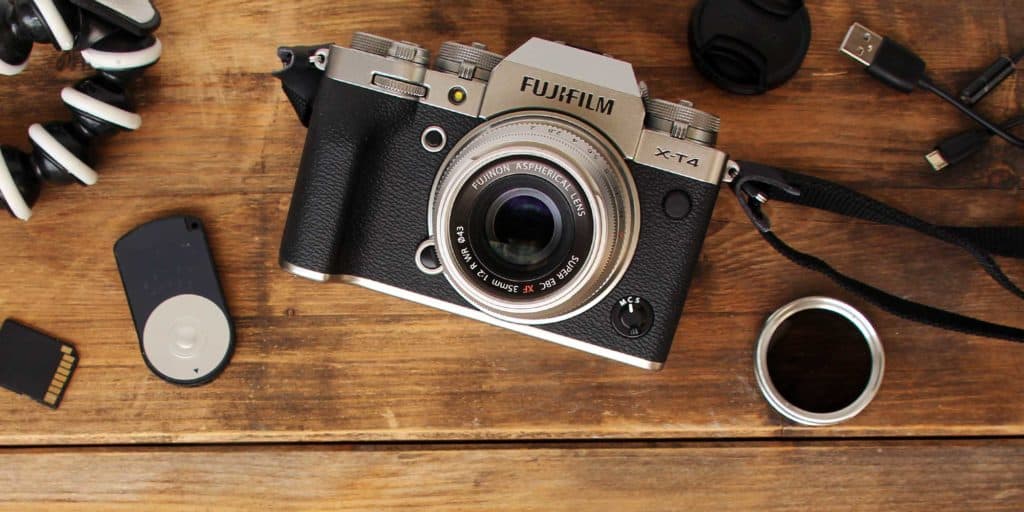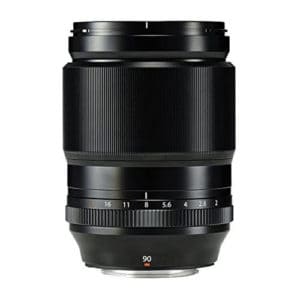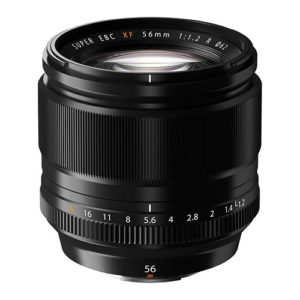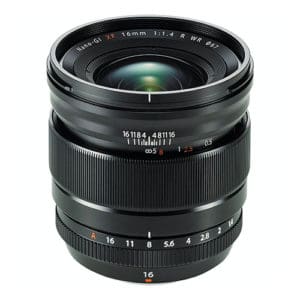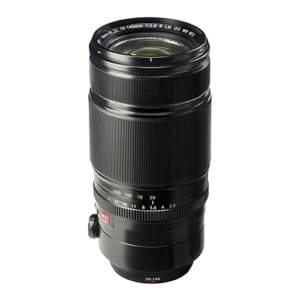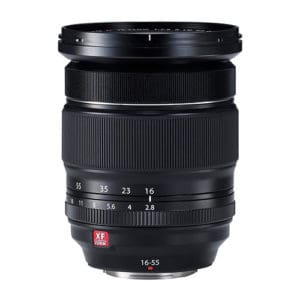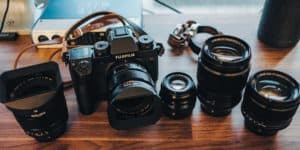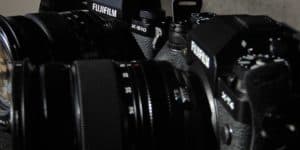Looking for the best lenses for the Fuji X-T4 but unsure where to begin? This guide will set you straight in no time!
For full-frame DSLR manufacturers, APS-C has always been something of an afterthought. As a result, they’ve tended to invest less in developing top-end lenses for this format.
But for Fuji, on the other hand, APS-C is their bread and butter. Meaning that they’ve concentrated on producing more premium quality lenses in this sector than most other manufacturers.
In short, the best lenses for the Fuji X-T4 are in fact some of the very best lenses available for the APS-C format. Period.
But with close to 30 X-mount lenses available in the range, which are the best lenses for the Fuji X-T4, and how to go about choosing the right one for your photography? Read on for the full intel.
Fast, sharp, and quick to focus, the Fujifilm 90mm f/2 R LM WR is perhaps the only medium-length prime lens you’ll ever need as a Fuji X-T4 shooter.
From nature and wildlife photography to portraits, headshots, sports, and street-style, this is a telephoto lens you can rely upon to deliver tight, crisp images every time.
Offering a field of view comparable to 137mm on full frame, Fuji’s 90mm f/2 lens allows you to get close up on your subject without the need to be standing at the other end of a football pitch in order to use it.
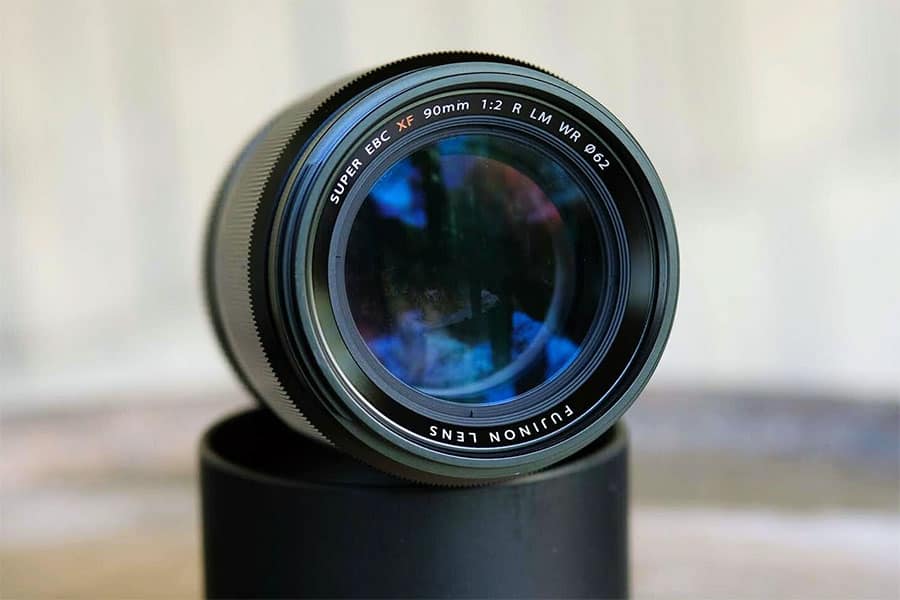
What’s more, with a fast maximum aperture of f/2, and impressive out of focus rendering properties, backgrounds are rarely going to be anything but creamy soft.
The lens produces images that excel in terms of color, detail, and sharpness.
Indeed there is very little to grumble about here in the way of optics.
The barrel is fairly short for a lens of this focal length, and certainly not so big and bulky as to ever risk drawing too much attention to itself.
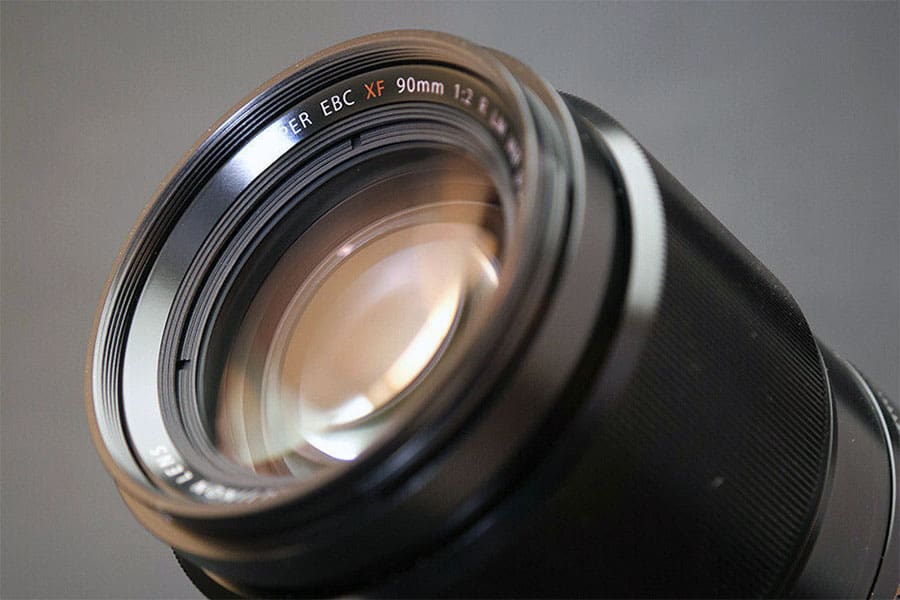
Build quality is solid and, as indicated by the letters “WR” in its name, the lens is fully weather resistant.
The 90mm f/2 comes with great autofocus capabilities that are particularly impressive when tracking fast action.
AF is also very silent, meaning it’s a good option for videographers. The lack of true tactile control associated with the focus by wire system makes the 90mm less suitable for manual focus pulls. But in any case, all these Fuji lenses suffer from the same issue.
On the downside, the fact that there is no image stabilization in a lens of this focal length makes it more prone to camera shake than some might desire.
But the X-T4 body mostly has you covered on this front anyway. In short, there’s little not to like here.
Offering a field of view equivalent to a 35mm lens on a full-frame camera, Fujifilm’s 23mm f/1.4 is a moderately wide-angle prime lens with a desirably fast maximum aperture and solid optics.
Together, these qualities make it a tool of choice for X-T4 users working in a wide range of photographic genres: from documentary and street photography to wedding, events, and even astrophotography.

Featuring a big and sturdy barrel, the 23mm f/1.4 boasts a nice pump-action AF/manual focus locking mechanism and is a pleasure to use.
However the autofocus motor is not of the most modern variety and creates a noticeable degree of noise; meaning that the lens is less suited to video work unless focusing is done manually.
While a lack of image stabilization in the lens itself may at first seem like a major oversight, just keep in mind that your X-T4 body already offers this, so in practice it’s not a feature you’re likely to miss.
With regards to the lens’s optical performance, there’s some minimal vignetting, but next-to-no flare or barrel distortion.
Indeed image quality is generally great. Especially from about f/2.8 onwards; at which point the lens really performs at its best on all fronts.
For those unsure whether they should go for this model or the much cheaper Fuji 23mm f/2 R WR lens, the decision will largely depend on your particular needs as a photographer.
Despite costing half the price, the f/2 version actually has the advantage of being weather sealed. And it’s also smaller and lighter than the f/1.4 – making it a good choice for those shooters who either like to stay on the move or prefer to keep things discrete.
Yet the f/1.4 is not only slightly sharper than its more budget-friendly sibling, but also produces nicer looking bokeh. And combined with the faster aperture, these details make the Fujifilm 23mm f/1.4 the better choice for achieving tasty shallow depth of field shots.
All in all then, while both the f/2 and f/1.4 versions of this lens can hold their own, the f/1.4 just beats the slower option to our list of the best lenses for the Fuji X-T4.
With an angle of view equivalent to an 84mm lens on full frame, and offering a fast maximum aperture for beautifully blurred backgrounds, Fujifilm’s 56mm R f/1.2 will appeal to many X-T4 users as a dedicated portrait lens.
Autofocus is fast an accurate – even in challenging lighting conditions – and there is no focus breathing.
Less positively, though, there is some quite noticeable AF motor noise, making the lens largely unsuitable for videography unless an external microphone is used.
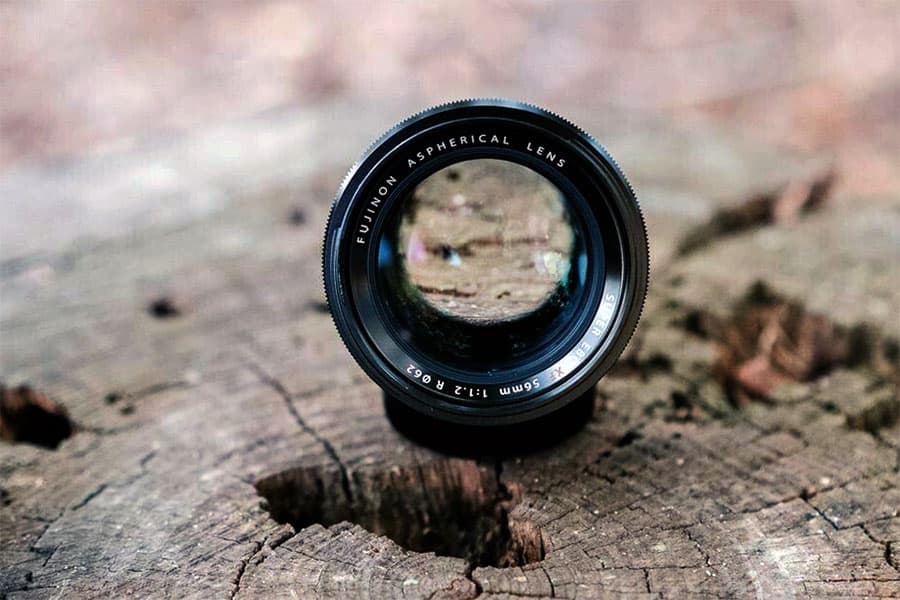
Sadly, while manual operation might seem like a good compromise for video work, in practice the manual focus ring is not super pleasurable to operate either.
More satisfying, though, is the physical aperture ring, which clicks into clear stops.
While the Fujinon 56mm is reassuringly solid, and built from sturdy metal, there is no weather sealing at the lens mount; so it’s not a lens you’ll want to unnecessarily expose to the elements.
These practicalities aside, though, it is optical performance that really sets the 56mm f/1.2 apart. And when it comes to choosing a portrait lens, that counts for an awful lot.
For a start, images produced with this lens display excellent central sharpness, even when it’s used wide open.
What’s more, even the corners are pretty impressive in this department too. So not only will this bit of glass be of interest to portrait photographers, but it might also appeal to shooters of other genres; from product and still life photographers to those doing more creative or experimental landscapes.
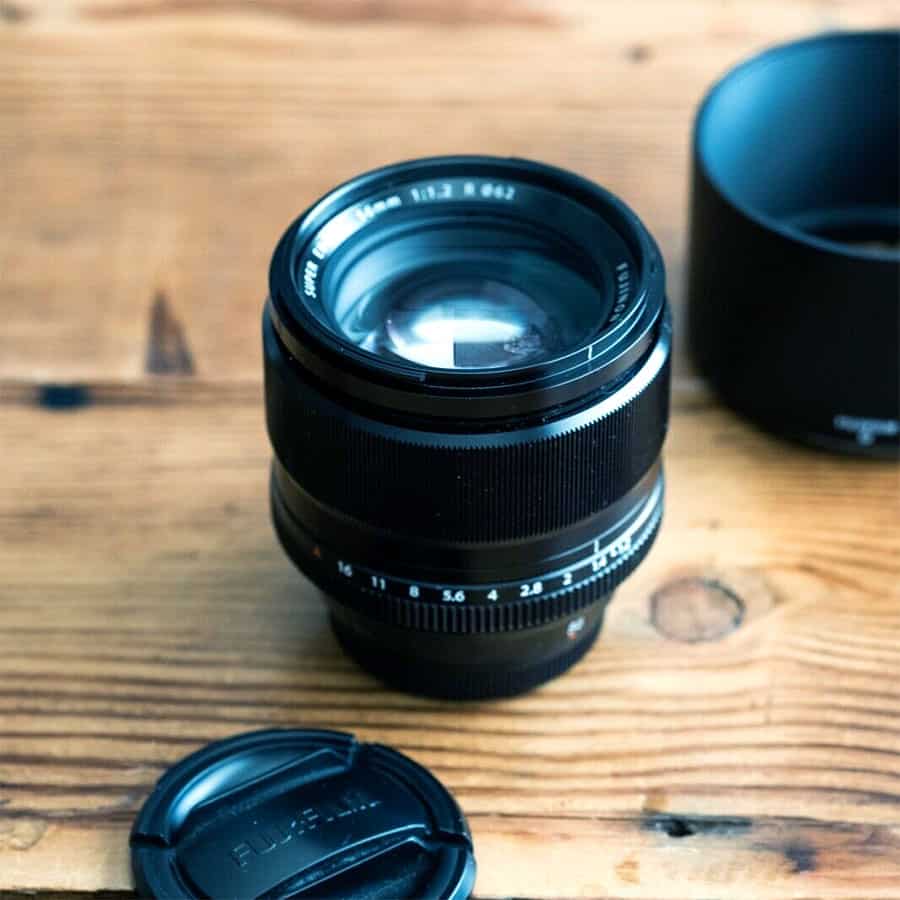
Of course, the maximum aperture of f/1.2 is very bright, and means that the lens is capable of producing exceptionally blurred backgrounds; usually a highly desirable feature when it comes to portrait photography. It’s not just the degree to which the background becomes blurred that counts, though, but also the quality of that blur.
And rest assured that in terms of bokeh the 56mm f/1.2 also delivers beautifully.
True, you’ll notice considerable flare when shooting against the light. And there’s no image stabilization either (but then, as a Fuji X-T4 user, you don’t need it anyway).
But overall this is a great piece of glass; undoubtedly one of the absolute best lenses available for the X-T4 right now.
Want even more control over the blurring of your backgrounds? Take a look at the “apodization filter” version of this lens, the Fujinon 56mm R f/1.2 APD. Just keep in mind that it’ll cost you an even greater premium than this already quite pricey piece of glass.
The Fujifilm 16mm f/1.4 R WR is a great general use wide angle prime offering the equivalent coverage of a 24mm lens on full frame.
With its fast maximum aperture and good manual focus controls, it is particularly recommended for both night sky photography and handheld low-light documentary work.
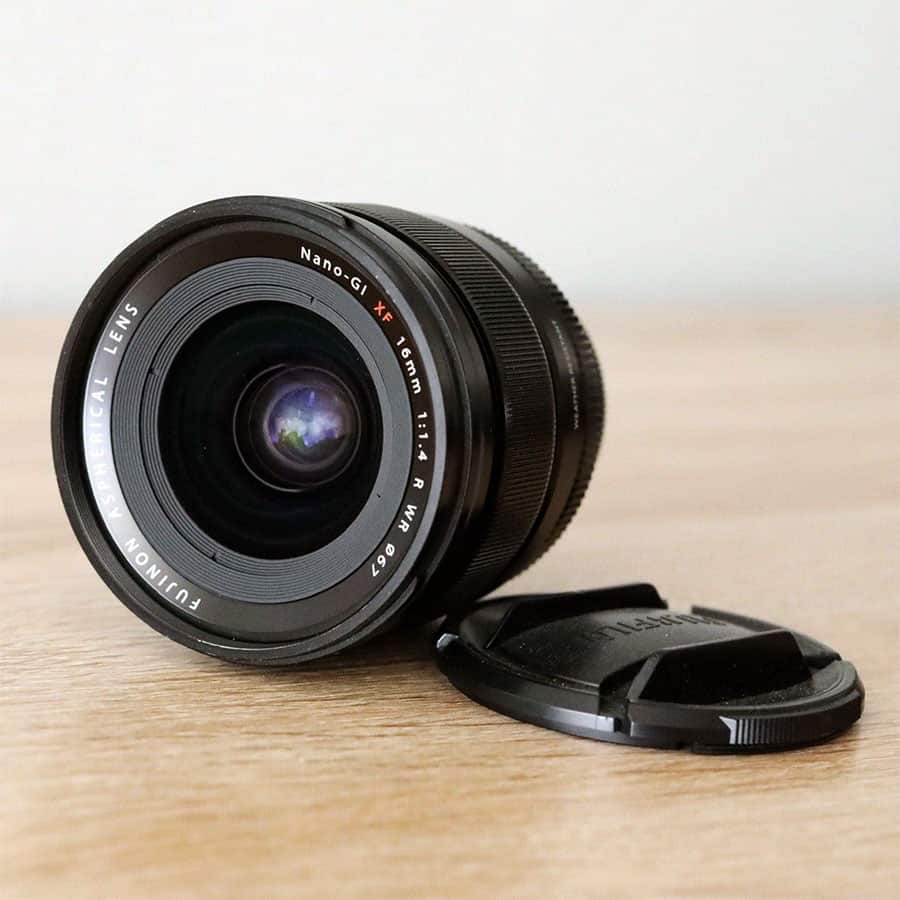
Although much, much bigger than Fuji’s slower 16mm f/2.8 offering, the 16mm f/1.4 is a reassuringly well-built metal lens that features nice ergonomics.
It boasts a hard-stop manual focus ring that can be quickly snapped back and forth to toggle between AF and manual operation. Meanwhile, autofocus is very accurate and reasonably fast.
Overall the Fuji 16mm f/1.4 displays good optical performance, with flare and ghosting well-controlled and no noticeable distortion issues.
Astrophotographers be warned, though, that some slight coma is visible at the corners when shooting wide open.
Likewise, there’s also a touch of softness at the edges when working at maximum aperture, but this quickly vanishes when stopping down.
To sum up, the Fujifilm 16mm f/1.4 R W is a great little lens.
But as with the 24mm f/1.4 (above), it comes at a price point that some will find a real deterrent.
In which case the cheaper 16mm f/2.8 iteration may instead prove the more attractive of the two.
Fuji’s XF 50-140mm f/2.8 lens is a great medium telephoto zoom lens that will appeal to everyone from wedding and events photographers to those shooting portraits, sports, nature, or wildlife photography.
Offering focal lengths roughly equivalent to 76-213mm on full frame, and a relatively fast and fixed maximum aperture right through the range, this is a solid multipurpose zoom for regular use.
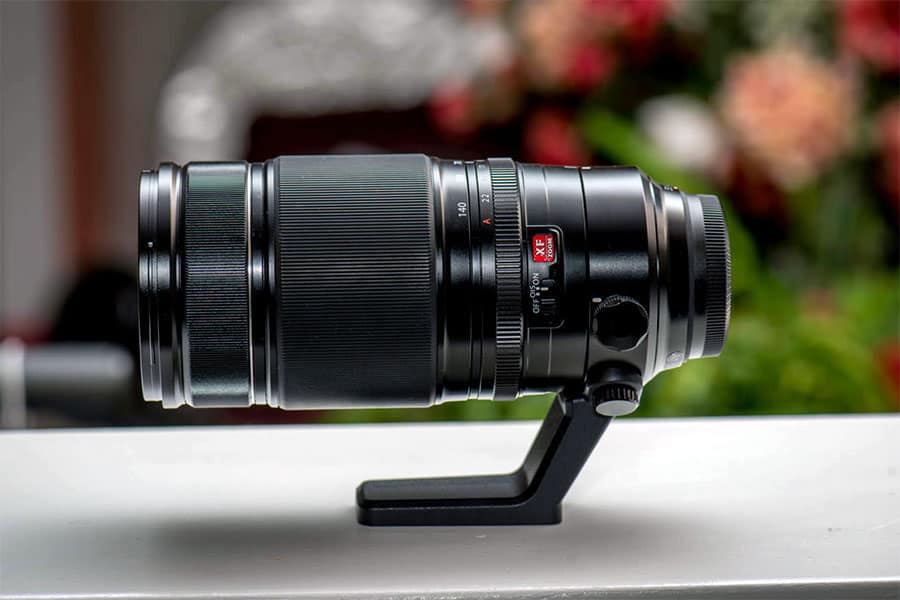
The 50-140mm is sturdily built from metal alloy and comes weather sealed at the lens mount.
It features a physical aperture ring, a very satisfying zoom ring, plus a manual focus ring that really isn’t all that bad considering that control is “by-wire” (rather than due to the direct movement of mechanical parts).
Autofocus is fast and accurate, face-detect AF works well, and when used for video the lens is capable of creating beautifully smooth focus pulls.
However there is no focus limiter switch.
OIS also functions well. But as the X-T4 comes with its own image stabilization, this will likely not be too high on your list of priorities.
While the lens displays very good central sharpness throughout the focal range, corner areas tend to be a little soft until you stop down to about f/5.6 and beyond.
Bokeh is very pretty and color rendering is excellent.
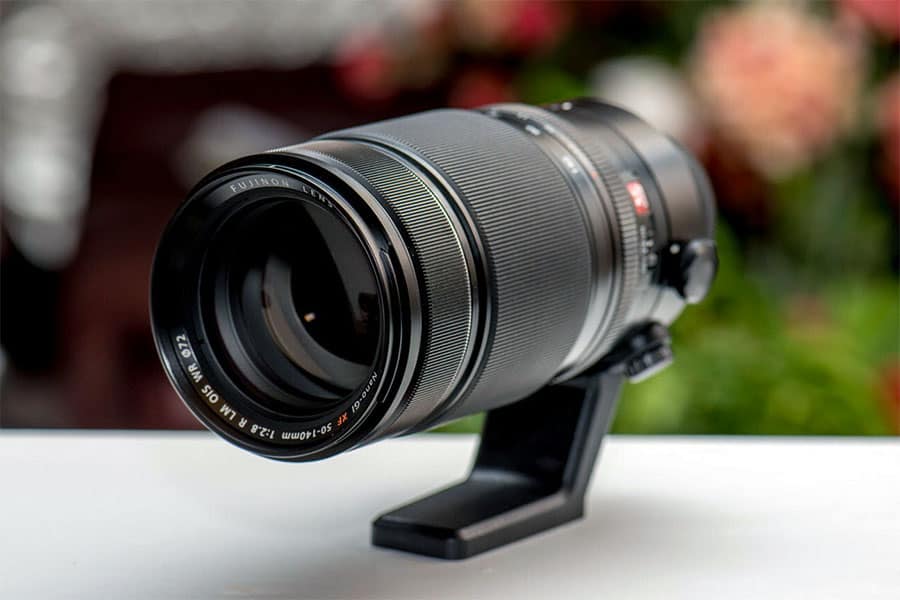
The lens suffers from little in the way of optical aberrations.
However, as with many longer focal length zooms, flare and ghosting are quite noticeable when shooting against the light.
Use this lens in tandem with the 16-55mm f/2.8 (below), or a sharp little prime lens or two, and you’re basically covered for any photographic eventuality.
Yes, the 50-140mm is much more expensive than Fuji’s wider-reaching XF 55-200mm zoom. But that’s because you’re paying for a supremely usable aperture of f/2.8 right across the scale – compared to the disappointing variable aperture of f/3.5-4.8 offered by the cheaper lens.
Not only that, but here you also get weather sealing.
Fuji’s XF 16-55mm f/2.8 is a great all-round zoom lens that is ideal for travel, documentary, portraiture, and just general daily use.
Indeed, offering a relatively fast maximum aperture that is constant throughout the zoom range, and providing good central sharpness, there’s little this lens doesn’t excel at.
The one exception here is perhaps landscape photography.
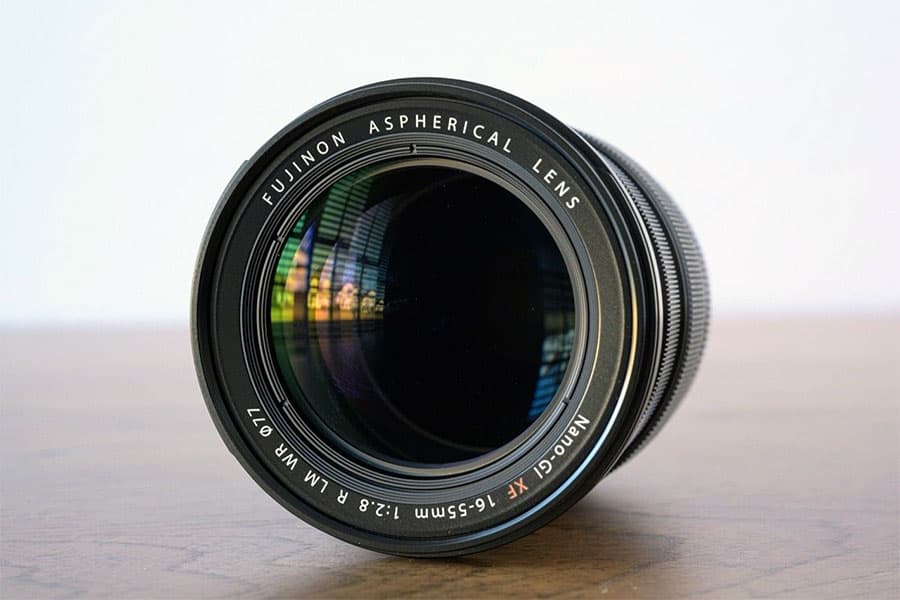
This matter aside, overall optical performance is very good indeed.
The only other minor issue being some slight barrel distortion when shooting at wider zoom settings (although this is of course easily corrected in post). Color rendition is truly beautiful and the lens produces excellent bokeh.
The 16-55mm f/2.8 boasts fast and silent autofocus, making it very useful for videography.
Although it can be weaker when it comes to focus pulling effects, where transitions occasionally lack the smoothness of some competing lenses.
There is also a manual aperture ring. In keeping with other Fuji glass, this is a focus by wire lens, yet the action is not bad at all. Meanwhile, for stills, eye AF works brilliantly.

Lack of image stabilization may deter owners of older Fuji models such as the X-T3, but clearly this is a bit of a none-issue for X-T4 users, where onboard stabilization has been added to the camera itself.
Solid, robust, and made from high-grade materials, it should be noted that the lens is big and heavy when used on the X-T4.
For a smaller alternative you might want to consider Fuji’s 18-55mm offering; while less of a premium lens it will nonetheless be a good step up from the kit lens.
All things considered, this is a lovely zoom for regular casual use.
In fact, depending on your particular shooting needs, it might even be the only lens you really need for your X-T4.
A Guide to Choosing the Right Lenses for Your Fuji X-T4
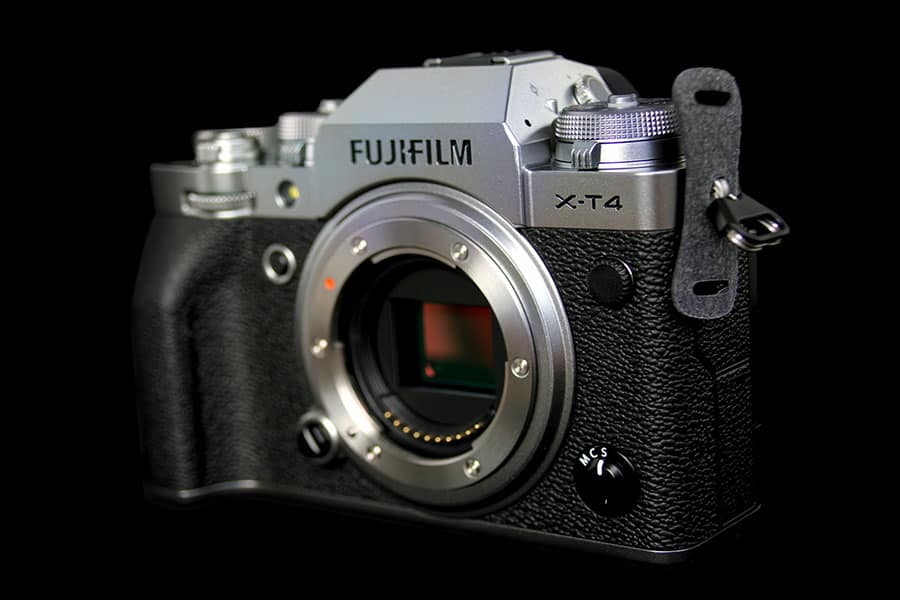
Maximum Aperture
As a general rule, the wider the maximum aperture a lens offers, the more money it is likely to cost.
This is largely just down to a simple question of mechanical and optical engineering; a wider aperture necessitates a more technically advanced lens design.
This means that, if you can live without a wide aperture and still shoot the photographs you want to, you can save yourself some money by going for a slower lens.
In practice, though, there are a number good reasons why you might want to spend a little more on a lens with a faster maximum aperture.
Indeed, for many photographers, purchasing a lens with a wide maximum aperture will be a wise investment.
For a start, a wide maximum aperture means more light hitting the sensor; freeing you up to use a lower ISO setting for noise-free images.
Alternatively, it will allow you to increase the shutter speed in order to freeze action.
Or a faster aperture might simply make the difference between achieving a technically acceptable shot and one that is blurred or underexposed.
Of course, aperture doesn’t only influence the amount of light entering the lens, but also the depth of field of the image. Indeed, choosing to shoot at a wider aperture is one way of achieving a shallower depth of field.
The wider the aperture, the more the background will become blurred.
This technique is valued by many photographers for providing “separation” between subject and background.
As a shallow depth of field is more difficult to achieve on the APS-C format than with a full frame or medium format camera, Fuji X-T4 users will often prioritize a fast maximum aperture when choosing which lenses to purchase.
Exceptions to this are photographers who are mostly interested in shooting landscapes, interiors, and other genres of photography where a shallow depth of field is generally undesirable.
Here any extra extra money spent purchasing a fast maximum aperture lens would largely just go to waste.
Bokeh
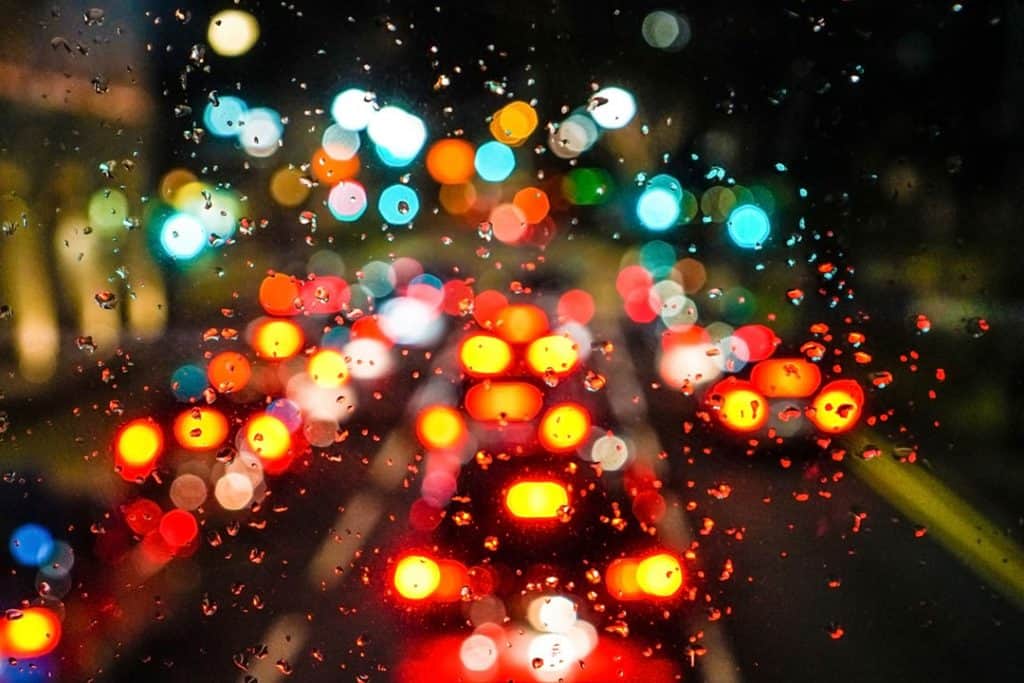
Bokeh refers to the way in which out of focus areas of an image are rendered by a lens.
With some lenses producing smooth blur (usually considered desirable), and others tending to produce backgrounds that are busier or contain distracting elements (less desirable).
The quality of bokeh is often most obvious in the circles formed by out of focus areas of light in the background of an image.
While bokeh is somewhat subjective, typically lenses that produce perfectly smooth, round light circles are highly valued.
Whereas ones that produce light circles with defects known as “cats eyes” and “onion rings” – in practice reflections of the lens’s diaphragm blades – are less desirable.
Bokeh is particularly noticeable when shooting at a very fast aperture.
However, while the maximum aperture of a lens is one of the main factors determining how sharp or blurred background detail will appear, it has no bearing on the quality of that blur.
Instead lens bokeh depends on a wide variety of different elements; the shape and number of aperture blades being just one of them.
In short there is no real method of understanding from a spec-sheet how the bokeh of a given lens is likely to be in practice.
The only way to find out is to look at sample images produced with a shallow depth of field. If you like the look of them, great. If not, keep searching.
Sharpness
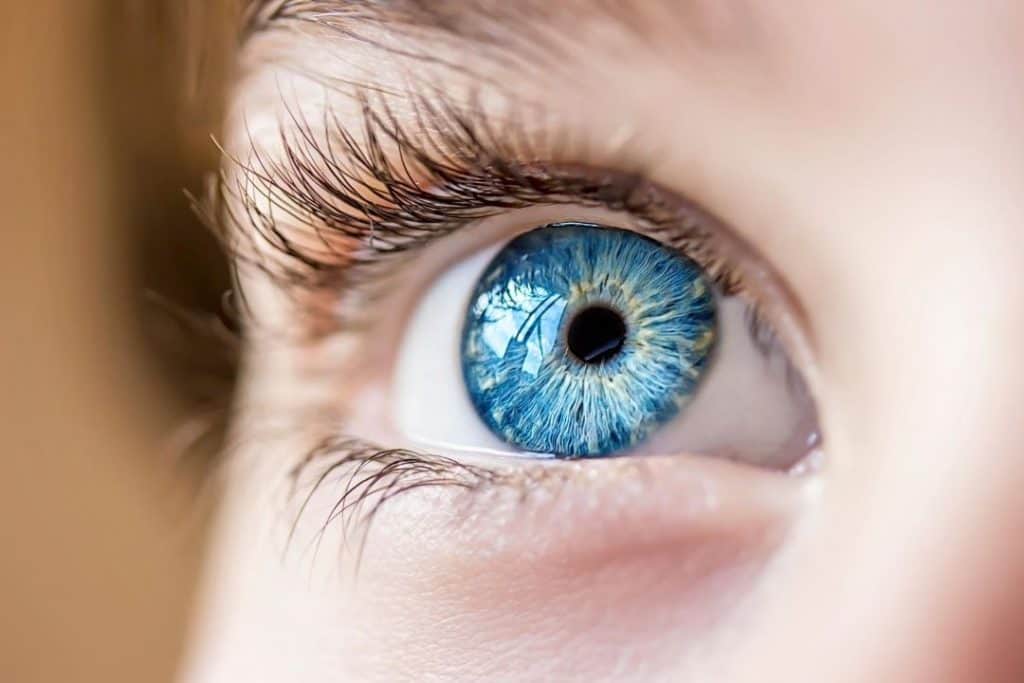
We could say that image sharpness is one of the most basic criteria of a good photograph; while not all sharp photos are good photos, very few photos that are not sharp are likely to be considered good by anyone.
Clearly, then, you’ll want a choose a lens for your X-T4 that is capable of producing sharp images.
The good news is that very few modern lenses perform very badly in this department.
At least in the center of the image. And when discussing image sharpness, it’s important that we make a clear distinction between center and corner sharpness.
For most photographers, most of the time, center image sharpness is what really counts.
Think about it; unless you’re going for a truly avant-garde composition, you’re unlikely to place your subject right on the edge of the frame.
Indeed, for a portrait photographer, for example, a little softness towards the corners of the image might even be desirable; helping to draw the eye towards the crisply defined subject at the center.
The one clear exception here is the case of landscape photography; although in a landscape photograph there will often be a main point of interest somewhere towards the center of the composition, nonetheless it’s generally desirable for the entire image to be as sharp as possible, from edge to edge.
And so if you plan on shooting landscapes – or indeed any genre of photography where image-wide clarity of detail is a must – then you will need to purchase a lens that also delivers good corner sharpness.
Prime vs Zoom
A prime lens offers a single focal length and nothing else; if you want a change of perspective, or can’t fit all the subject into the frame, you’ll either need to switch to a different lens or get up on your feet and move.
A zoom lens, on the other hand, is like having multiple prime lenses in one – only without all the extra bulk and weight. Don’t like the angle of view?
Or don’t have space to move backwards? No problem; just rotate the zoom ring and reframe.
So why not simply go with a zoom lens all the time?
Well, there are actually a number of good reasons why many photographers prefer to avoid them.
Firstly, some photographers simply prefer working with primes; primes tend to be smaller and more compact, and they force you to think more about the framing and perspective of your shot than might be the case if you can simply zoom to a different focal length each time.
But there are also a couple of important technical issues to consider here; namely image sharpness and maximum aperture.
Designing a zoom means cramming more glass elements – and other mysterious mechanical parts – into the lens without it either becoming impractically huge or outrageously expensive.
And in order to achieve this minor miracle, certain compromises need to be made.
The first thing to go is usually a fast maximum aperture. To be clear, many of the best zoom lenses come with a respectably fast maximum aperture of, say, f/2.8. But it’s rare that they’ll offer anything much faster than this. In any case, you should be prepared to pay top dollar for such a lens.
Meanwhile, a cheaper, more average, zoom lens will tend to come with a mediocre maximum aperture when used at its widest zoom setting, with this dropping even further as you zoom through the focal range.
Not a problem if you only ever plan on shooting at f/5.6 or slower, but not hugely practical for most people.
The issue of lens sharpness, however, will likely affect everyone; it’s technically much more challenging – and invariably much more expensive – to produce a zoom lens that remains sharp throughout its entire zoom range than it is to manufacture a prime lens that produces sharp images at its one and only focal length.
In other words, zooms tend not to be as sharp as primes.
To be clear, very sharp zoom lenses exist. But you can expect to pay a lot for them. Whereas a couple of exceedingly sharp primes in corresponding focal lengths can likely be picked up for a fraction of the cost.
Image Stabilization
Optical image stabilization is a very hand thing to have in a lens; often permitting technically acceptable results even when handholding a shot at a very slow shutter speed.
Indeed, OIS can make the difference between being able to pull off a shot with precision, and simply ending up with a blurry mess; or just giving up in frustration.
For owners of earlier Fuji models – the X-T3 for example – a lens’s lack of optical image stabilization is often a real dealbreaker.
But of course, one of the advantages of the X-T4 over its predecessors is precisely that Fuji has introduced image stabilization to the camera itself.
So while it certainly wouldn’t hurt to benefit from a lens that also offers its own stabilization, you probably shouldn’t allow lack of optical stabilization to deter you from purchasing a given Fuji lens if it otherwise meets all your criteria.
The X-T4 has your back already.
Useful Links
Final Thoughts
Thanks for reading my guide to the best lenses for the Fuji X-T4. As we’ve seen, precisely which of these is the very best lens for the Fuji X-T4 is a somewhat subjective question and the answer will largely depend on your personal photographic needs.
Nonetheless, rest assured that all six of the lenses I’ve reviewed here are truly top notch and fully worthy of your consideration.
Are you a Fuji X-T4 shooter? What would be your personal lens recommendations for other X-T4 users?
I’d love to hear about your experiences in the comments section below!

